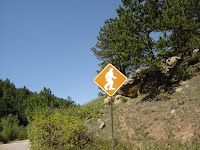Here are the most common objective writing mistakes:
- Not establishing a target. Simply saying that your participants will “show growth” is not a target. How much growth, according to what measure?
- Not identifying how growth will be measured. If you say that there will be a 20% growth in parent knowledge of how to help their children at school, you need to cite your measurement tool. I would also recommend that you be much more specific in how you set the target. Are you talking about 20% growth in the number of parents who reach a cutoff score on a particular assessment or are you referring to a gain of 20 percentage points in the average score of parents on the assessment you identify? Those are very different targets and they are measured differently. Do you see what I mean about being specific?
- Not identifying a timeline for achievement of the objective. You have set a target, but you also need to give a timeline. Will it be achieved each year? Each quarter? By the end of the project? The further out your timeline is, the more important it is to also establish short term benchmarks.
- Setting a target that is too rigorous. Many people think that they will be most likely to get funded if they set the their targets really high or if they target 100% achievement. The problem with that is that a) you may get the grant, but you have doomed yourself to failing to meet your objectives before you even start; and 2) grant readers are more sophisticated today than they were 15 years ago. They are on the lookout for objectives that are not possible to achieve.
- Setting a target that is too low. Other folks go the other direction, and they try to set a really low target so they will definitely be able to meet it. This is commonly done by establishing a target that measures a percentage of a number. For example, to say that there will be a 50% gain in the number of parents who show growth on a particular assessment could be a very low bar to meet, even though it sounds high. If only 2 parents showed growth between pre-and post assessment prior to your grant, you could meet that objective by showing a gain of one parent who showed growth (total 2 parents) after the grant is funded. Don’t try to cheat. Think about what results you want to achieve and what services you are willing to implement to help you get there, and set your targets accordingly.
——————————–
You might also be interested in:
Five Tips for Writing Good Grant Objectives
——————————–
Check out the Grant Tips iPhone App for over 100 grant writing tips you can really use!





